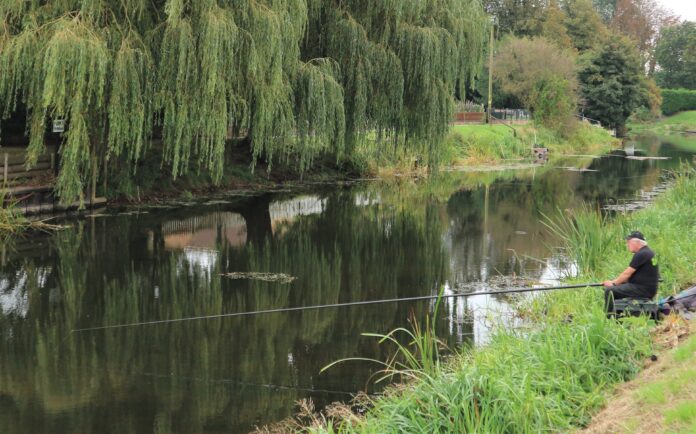ANGLING HAVEN
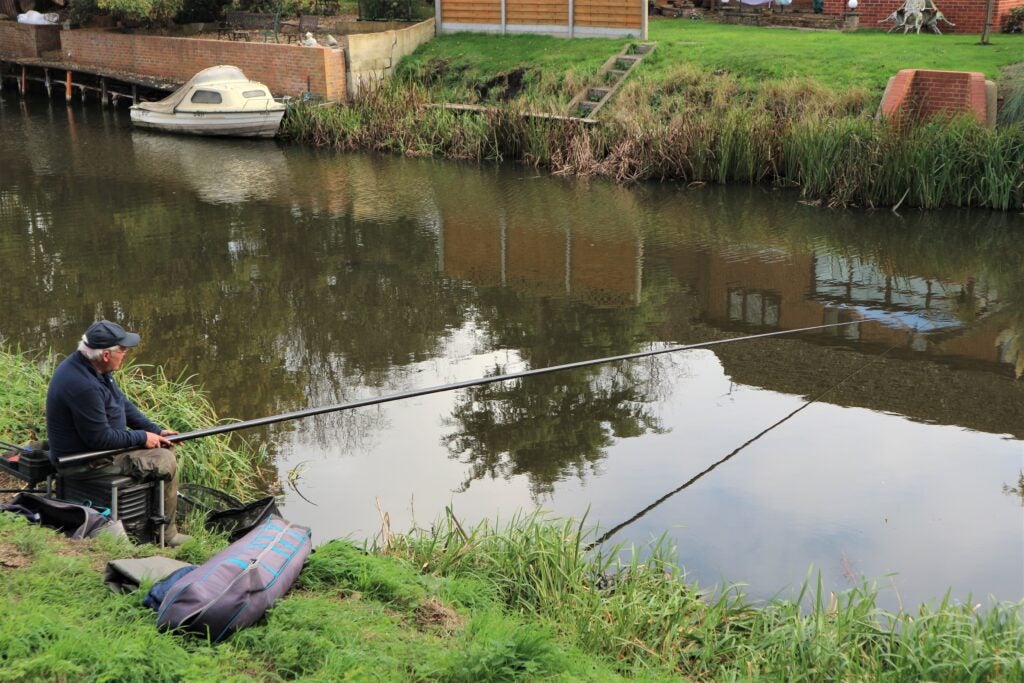

In the quest for consistent winter fishing, many people might head for heavily stocked commercial fisheries. But there is one cold weather angling mecca I know of that’s as far removed from that as possible. The old course of the River Nene meanders through the small fenland village of Benwick, and it’s here where match anglers flock from far and wide when the first frosts kick in. I used to travel up from London many years ago, to fish highly competitive winter leagues on this venue when I was with Essex County. This place was always guaranteed to provide plenty of bites, even in the foulest of conditions. The reason being the tiny waterway is well sheltered by high banks, trees, bridges, moored boats and houses. Apart from giving anglers some respite when it gets chilly, huge shoals of fish migrate into the narrow waterway from the exposed and often featureless surrounding farmland areas, most probably to escape from predators.
RIGHT MOVES
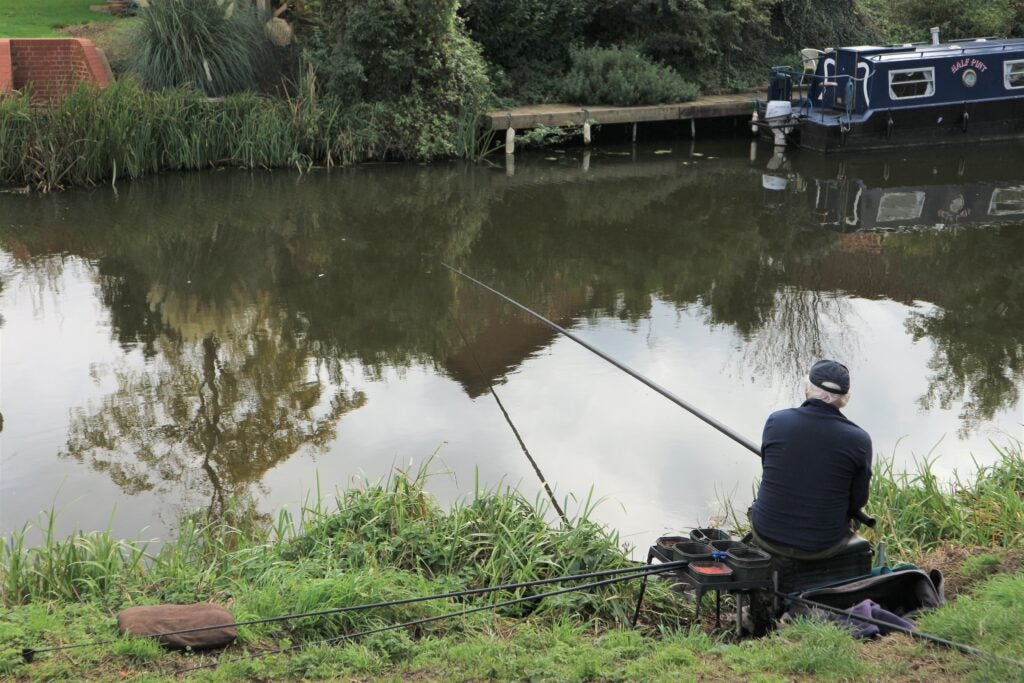

It’s complicated fishing a venue that’s packed with so many fish. Lots of methods work on this gently flowing little river and most matches turn into a fish race. Favourite attacks are often centred on baits like punched bread, squatts, pinkies, hemp, chopped worm, big maggots or casters. Any of these can be used with pole or whip tackle, even the waggler in some cases. It’s a bit like playing chess, picking the right bait and way to present it. Also having several different feed lines, to try and maximise the potential from the water in front of you. The width of this river averages 14 to 18 metres, with most areas being 4 to 5 feet deep. Underwater weed can be a problem, with some pegs requiring raking. Even then you need to plumb around carefully to find reasonable clear spots. Jack pike can be a big pain too, reinforcing the need for having reserve feed lines to rotate around, also quickly deciding what size fish will be best to target.
MEMORY LANE
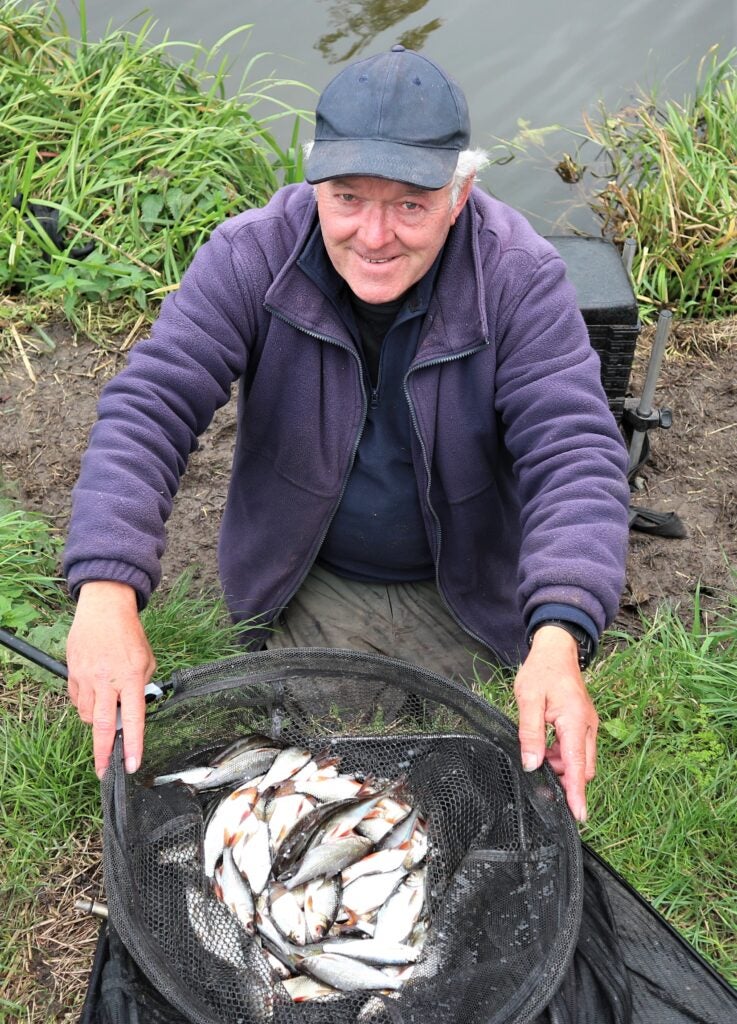

Although I hadn’t been to Benwick for three decades, when I eventually went back there last year the place still had a familiar fishy feel to it. It was late autumn, not very cold and possibly a bit early for the small river to hit its usual winter form. There was a lot of weed on the bottom too, which made even light pole tackle tricky to present properly. I still caught plenty. Nothing big, but it was very enjoyable playing the numbers game. I mainly caught small roach on maggots, and would have probably done better with punched bread, or maybe even hemp, which is known to work here right through the coldest months. Another option, which is hard to get these days, would have been squatts. I did try a chopped worm line for bigger fish, but got plagued by tiny perch. Another angler not far away caught a bonus tench on this bait close in. Tench and big perch can get you out of trouble when there’s not enough small fish in your peg.
ON THE FRINGES
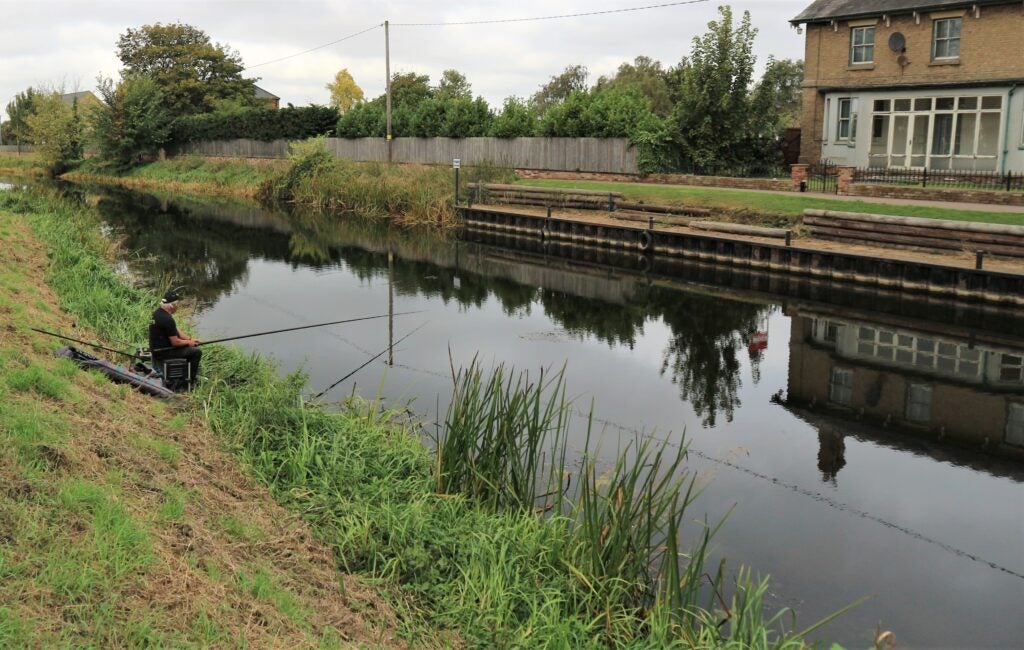

Recently, my mate Chris sent me a message to say he was going to Benwick to practise for a forthcoming match. I didn’t need much coaxing to tag along. By the time I got there, most of the easy access swims were taken by other anglers, who were also practising for various competitions. Generally, the best pegs are close to access points because they offer the most shelter in built-up areas, getting fished far more regularly. Once you move away from civilisation it becomes harder, often needing big bonus fish to get out of trouble. I took a gamble and sat on the outskirts of known hotspot swims, opposite a big empty house. The far bank was piled with a long private mooring, and the river was a tad wider here. It was wonderfully peaceful while I set up, but suddenly a busy gardener appeared, noisily strimming and mowing the grass opposite. My idea of trying a light waggler over to the far bank was put on hold for a while.
HOT PEGS
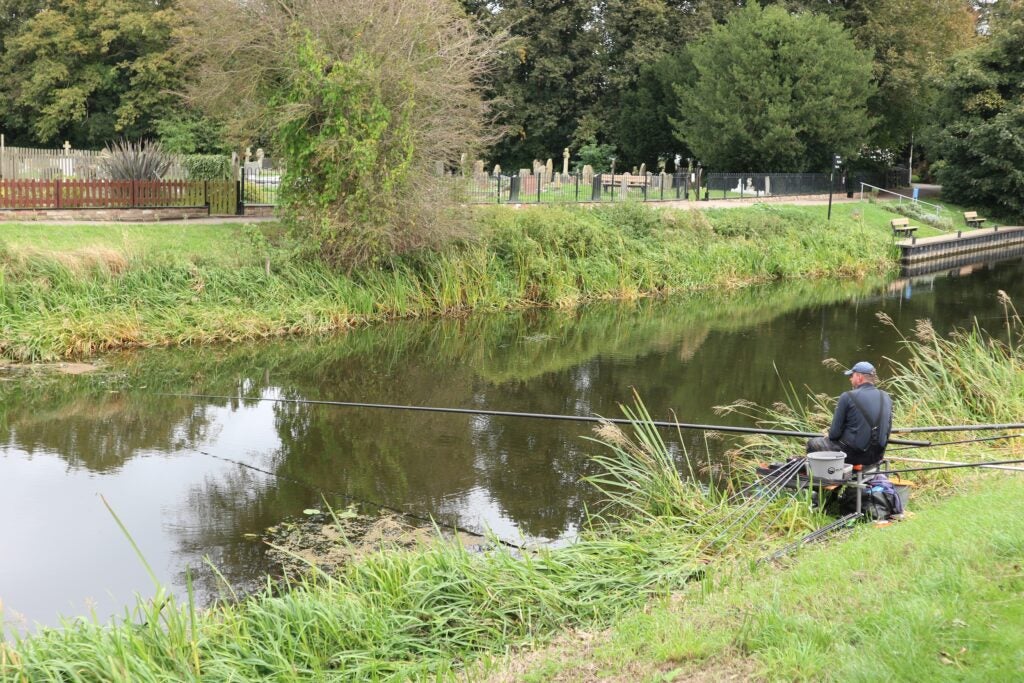

It was certainly less noisy where Chris was fishing, opposite a graveyard! He was already bagging up, fishing past the middle with the pole, towards where boats are normally moored up. This area is noted for hemp roach and that was the bait he was hoping to eventually wean the fish onto. Other anglers around, who had already started fishing when we arrived, were busy catching small roach, hand-sized skimmers and perch. I enjoyed the peace for a while, which was only being interrupted by the splashes caused by bait going in and fish being hauled out. It was interesting seeing the different approaches anglers were taking. One chap was catching fast on a whip, feeding small dollops of groundbait regularly by hand. Others were cupping groundbait in hard ball form, loose feeding over the top. I couldn’t see anyone going for big fish, so I formed a plan to try something different; the pole close in and the waggler when things quietened down.
TOP SEED
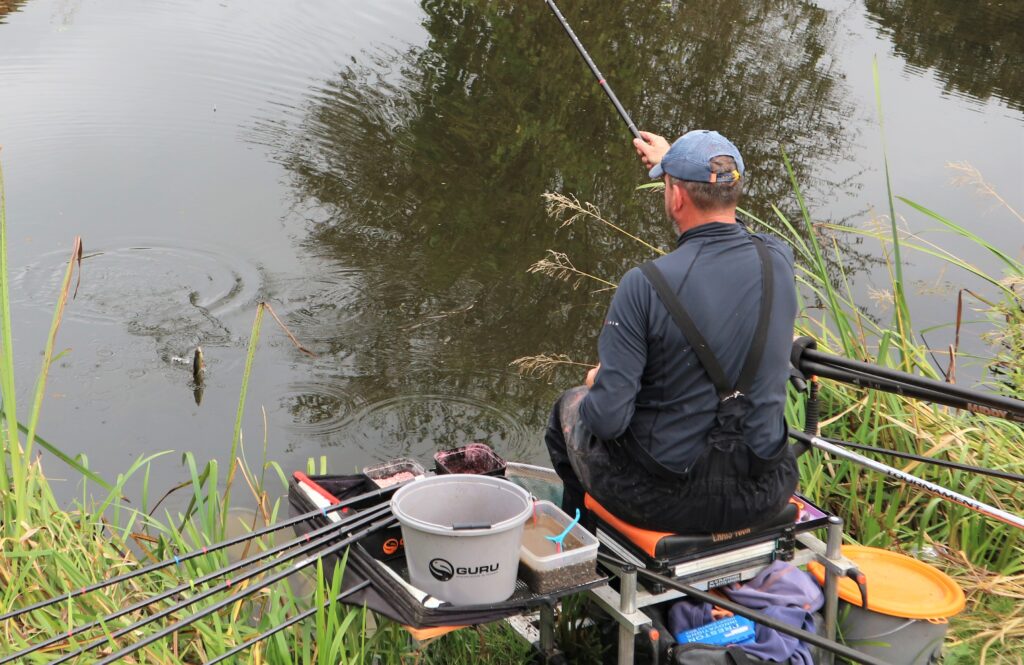

I watched Chris a while longer because I could still see the noisy gardener busy manicuring the grass opposite my fishing gear. Hemp was now being tried, fed in tiny, regular amounts. As if by magic, it suddenly opened up a new world. Each time a light pole rig was laid in, the float darted away before the hook bait got a chance to land on the bed of the river. The only difficult bit was trying to convert all the bites, because as is normal, they were as fast as lightening. There are several different ways of hooking this bait. The simplest is to push the bend of a small hook into the opening on seeds that have only slightly split. Another is to hook the white shoot on hemp that has fully opened. In both instances you lose the bait on missed bites. A more secure way is to drill a hole in the stubby end and thread the hook through this, while the Bob Nudd way is similar but using a loop of white cotton around the seed to attach the hook to. I left Chris to decide.
ROUTE ONE
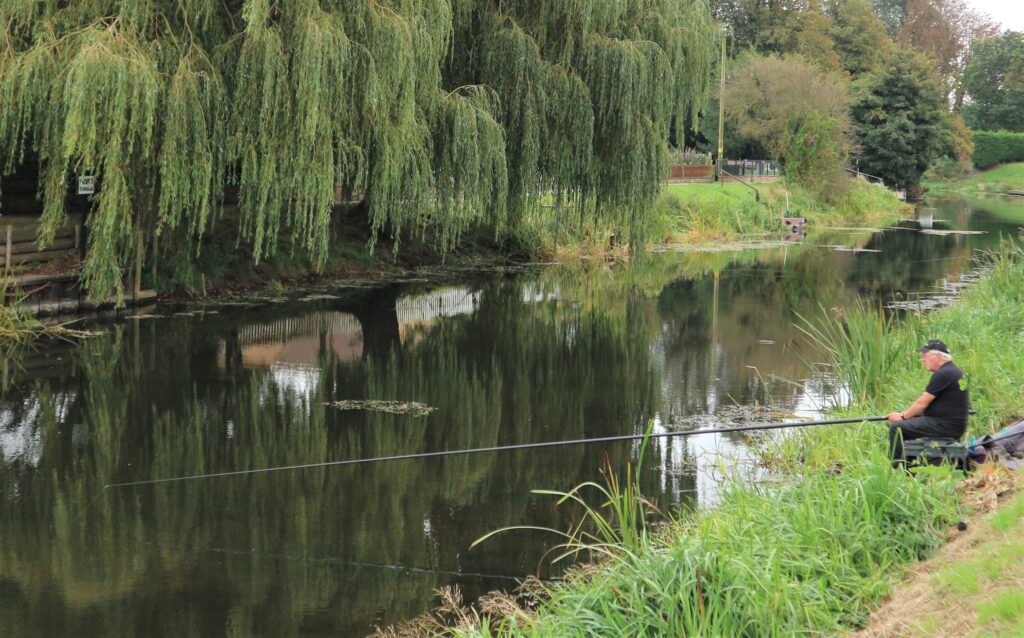

I had found a weed-free spot downstream, at the bottom of the nearside ledge to my left, feeding a good helping of chopped worm and casters with a pole cup. I tried here first, but kept a steady stream of casters going in over to the boat mooring opposite. The workman had disappeared by this stage, but there was still a lot of activity on the far bank. The owner of the big house, or an estate agent, was showing potential buyers around. The frantic tidying up operation earlier now made sense. Small perch, skimmers, roach and rudd turned up. It suddenly dawned on me why this swim looked so familiar, it was the same spot where Mark Pollard fished in a YouTube video. He caught well with a long pole on chopped worm, but judging by the lack of greenery on the trees, it must have been in the winter. There was currently a big bank of weed where he had bagged up from, and I couldn’t find any decent clear spots anywhere near it.
PLAN B
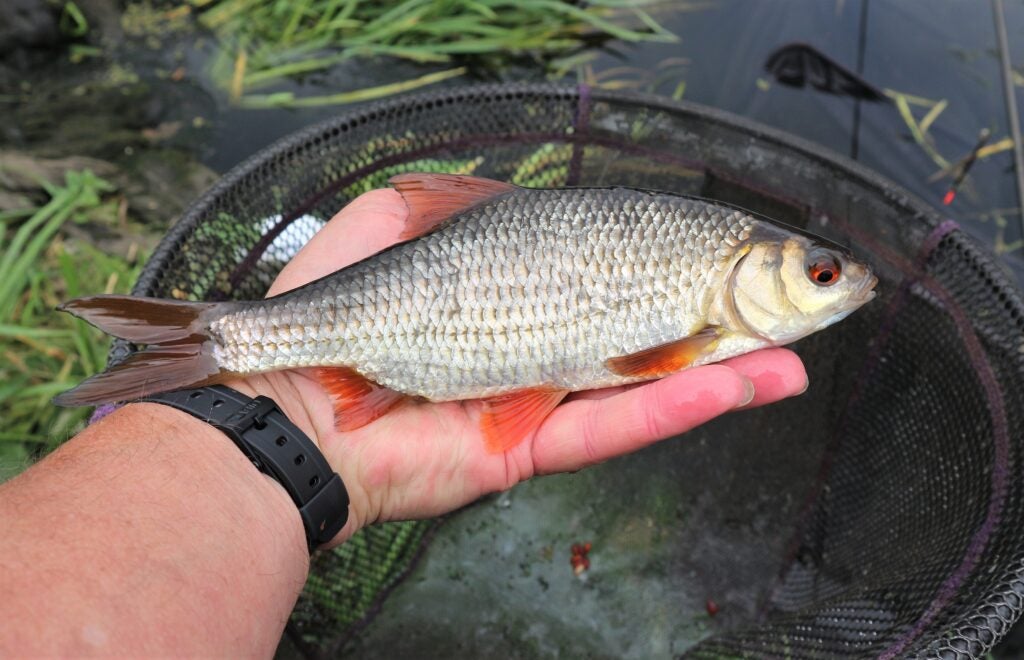

It was time to bring the waggler into play. There were still a few people milling about over the other side, but at least the noise factor had quietened down. This had looked such a peaceful spot when I arrived, seeing the empty house opposite and the ‘For Sale’ sign. It reminded me of when I used to pick swims opposite moored boats on the London canals many years back, always looking for empty craft and hoping for less hassle that way. Sometimes it worked, while there were also some disasters. I still vividly remember a day by a marina, where I had been slotting a waggler tight to a big old barge on the far side, just starting to connect with quality skimmers and roach. The DIY man from hell turned up, laden down with all sorts of tools. He noisily threw the whole bundle into the back well of the craft, and for the rest of the session it was relentless hammering and sawing. Back to the present time and my float went under. A nice roach turned up.
BAGGING UP
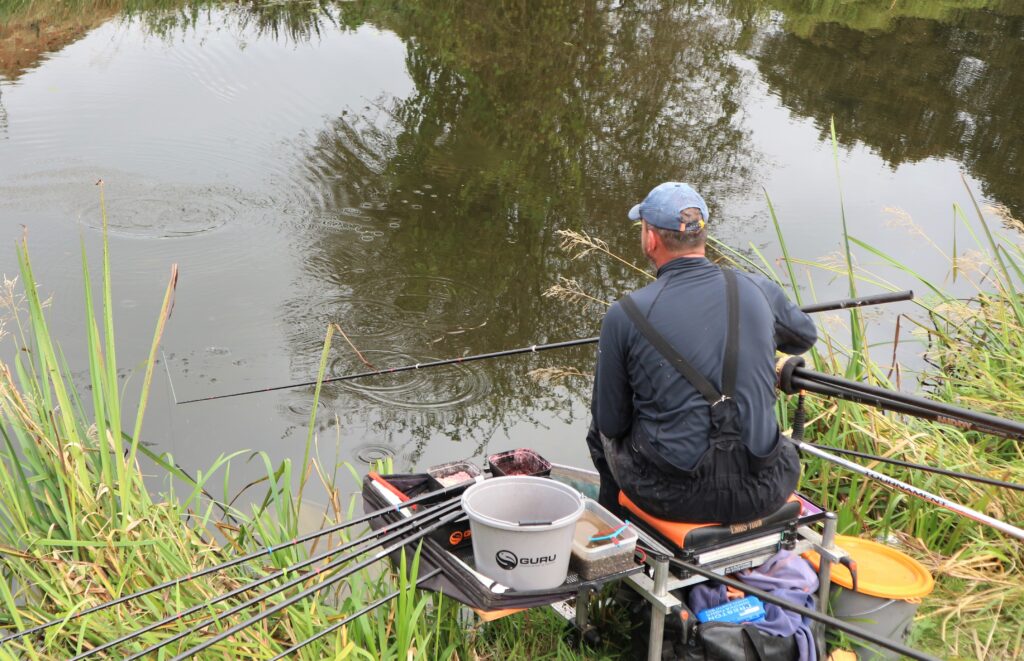

It was slow going on the waggler, with occasional bites coming out of the blue. No pattern, and I was having to cast around different areas to gain a response. Weed was also a big problem, with fine green stringy stuff constantly wrapping itself around my hook bait. I went to see how Chris was getting on and it was fast and furious action by this stage. Plump roach had switched on big time to the deadly black seeds he was putting in. Others around were still catching, but not as well as this. I estimated double figures was easily on the cards. Some fish were requiring a landing net. There were obviously a lot more shoaled in this area, while up where I was there were minimal signs of activity on the surface. I watched Chris for a while, because it’s enjoyable seeing how other people do things. As usual he had all his gear well organised, with loads of different top kits and rigs on display. It made my waggler set-up and single pole tackle look a bit sad!
ANOTHER LOOK
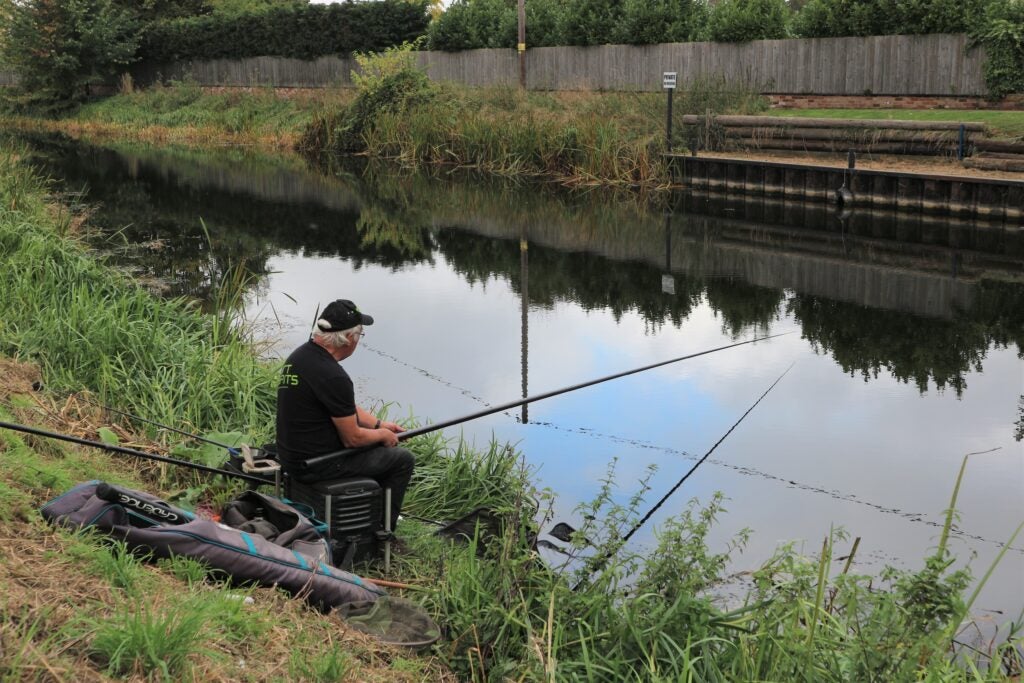

I tried the pole again when I returned to my peg. As usual, after resting the swim for a while, a quickly flurry of bites resulted. Nothing very big but just as I was thinking things were improving, there was a massive swirl as I went to lift a roach out, signalling pike had arrived. The roach didn’t quite make it and I saw a jack swim off with it firmly clamped across its jaws. That all ended up with my rig getting trashed. I set up an identical one and worked hard to get some fish going into my keepnet again, but eventually another bigger pike killed that off. I suspected I was sitting right on the edge of where the silver fish were shoaled up, hence so many predators being active on the fringes of all the activity. It would have to be the waggler until the end of the session. Where the pole was concerned, I had paid the price for being lazy and only setting up one rig. I should have searched out at least another feed line, to have a reserve spot to move to.
GRAVEYARD SHIFT
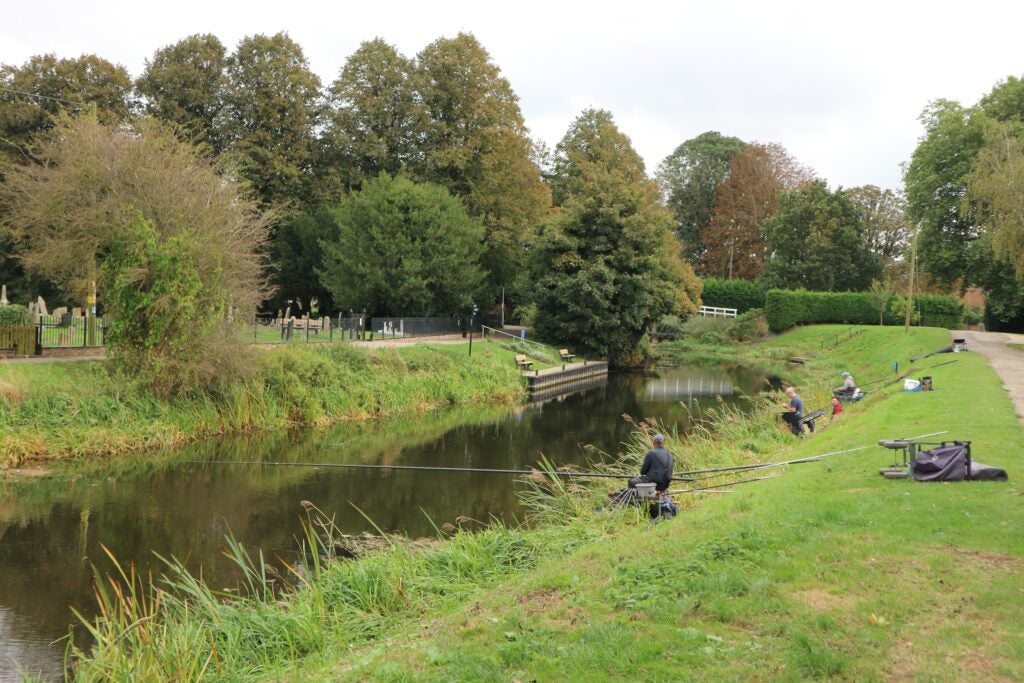

Having another look at the busy goings on down by the church, small fish were still coming out thick and fast. It was noticeable that Chris was catching better quality roach on hemp, as compared to the groundbait and small maggot approach others were taking. Baits like pinkies and squatts tend to keep the bites coming every put in, but it’s extremely hard graft working through so many small fish to get at the bigger ones. On venues like this when there are so many fish, if you take a maggot and groundbait route, the whip fished to hand is the best way to do it for speed purposes. But then you have to try and beat ace match anglers at this type of fishing, like Mark Pollard and Sir Bob Nudd, who frequent this place. The same anglers were almost impossible to beat at speed fishing back in my London canal days, which is why I often targeted big fish instead, to give myself a chance of competing. I needed a big bonus fish now on the waggler.
SECTION WINNER
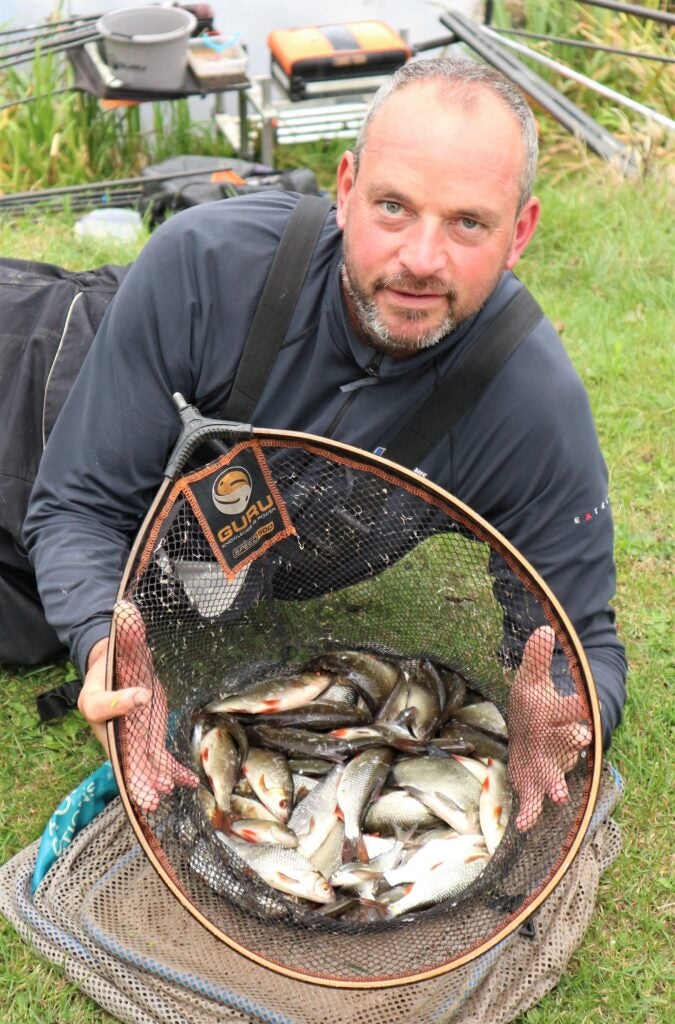

Chris had the best haul, mainly roach to the seed. I did manage to get the waggler working towards the end, catching some fair roach and rudd. I also hooked into the bonus fish I was hoping for against the far bank piling. A fast bite saw my rod arching round dramatically, as something big surged off downriver. The old house opposite was deserted by this stage, which is probably why the far bank had come to life. I was just beginning to wonder if it was a tench, or maybe a big perch, when suddenly the unseen force below the surface hit into a bank of weed. Everything went solid. I tried slack lining, changing angles, and thumping the butt of the rod handle while everything was under pressure. I suspect the fish had long gone after I eventually pulled my rig free. I packed up and went to photograph Chris and his catch. It had been an interesting day, possibly not everyone’s cup of tea, but I love fishing interesting venues like this.










